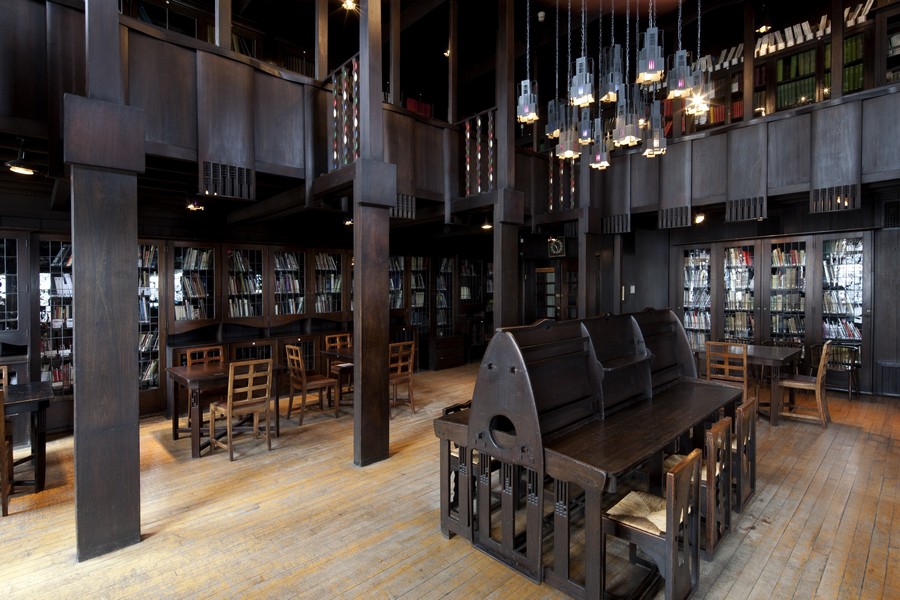‘Faithful reinstatement’ preferred option for Mackintosh Building
A detailed analysis of future options for the fire-hit Mackintosh Building at the Glasgow School of Art (GSA) has concluded that a faithful reinstatement within the practical constraints of the regulatory environment is the preferred option for the facility.

Much of the world-renowned building, designed by Charles Rennie Mackintosh, was extensively damaged when a fire broke out in June 2018 as it neared the end of a £35 million restoration by Kier following a previous fire that destroyed the west wing in May 2014.
Commissioned by the GSA from a hub West-led team of external consultants including Avison Young, a Strategic Outline Business Case (SOBC) for the Mackintosh Project included a rigorous analysis of the options in line with the HM Treasury Green Book guidance and Scottish Public Investment Manual, and involved detailed engagement with stakeholders including representatives of the local community, heritage sector, local and national government and GSA alumni, student and staff.
The long list of options ranged from do minimum, a new build on the site or elsewhere on the GSA campus to faithful reinstatement, hybrid, and a building elsewhere in the city.
The SOBC examined the Strategic, Economic, Commercial, Financial and Management cases alongside sustainability, and the social, cultural and educational impact of each option, within the context of the academic vision for the Mackintosh Project.
It concluded that the best option is to undertake a faithful reinstatement within the practical constraints of the regulatory environment, while innovating to make sure that digital technology and sustainability are at the building’s heart.
GSA said the preferred option addresses the key success factors in each of the areas of the business case and will benefit the nation, students, the community, academia and the economy by delivering the GSA’s academic objectives;
- Enhancing the student experience and consolidating the world-class reputation of a national institution; in a purpose built Art school
- Protecting the nation’s heritage;
- Creating a landmark sustainable building that can act as a catalyst for regeneration of Garnethill and Sauchiehall Street;
- Building community wealth, for example, by developing new apprenticeships in traditional and heritage crafts;
- Growing the GSA’s special contribution to the cultural, creative and economic fortunes of Glasgow; and extending the GSA’s relationships with industry and academia.
The preferred option will now be further considered with building work planned to start between 2022 and 2027.
Director of GSA, Professor Penny Macbeth, said: “The GSA is one of only three UK Art schools to consistently rank in the top ten of the influential QS world rankings for Art and Design. The original Art School building is synonymous with The Glasgow School of Art and it was central to the GSA’s learning, teaching and research for over a century, as well as being an important part of Glasgow’s cultural life and heritage.
“One of the recommendations of the Scottish Government’s Culture Tourism Europe and External Affairs Committee report was that we should examine a range of options for the future of the building, and the Strategic Outline Business Case has done just that, subjecting each of them to a rigorous analysis.
“Core to the SOBC was a programme of stakeholder engagement and I should like to take this opportunity to thank everyone who took part in this programme including our external Steering Group, led by Professor John French, for their vital contributions and insight. We will continue to work closely with our stakeholders throughout the project.”

















